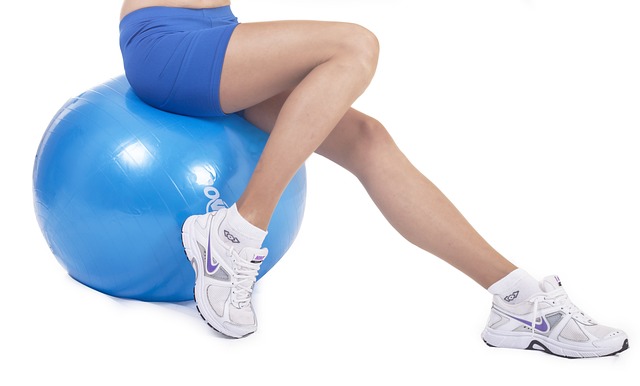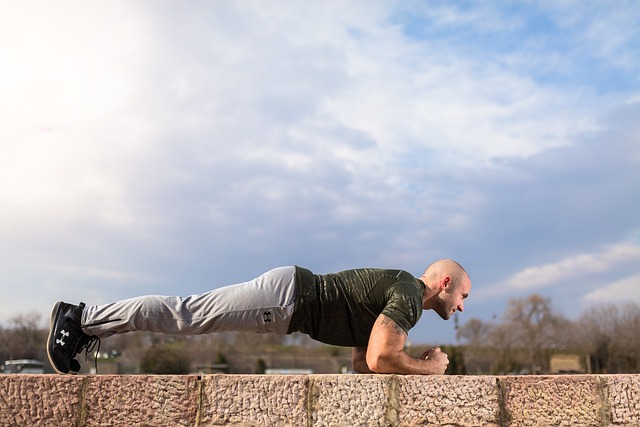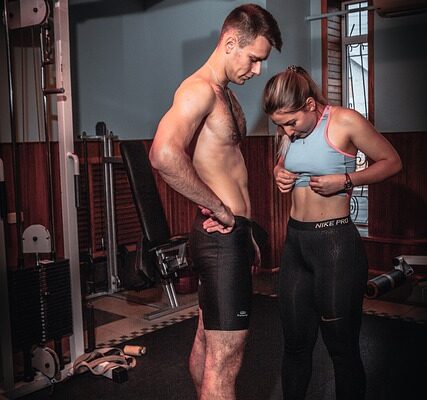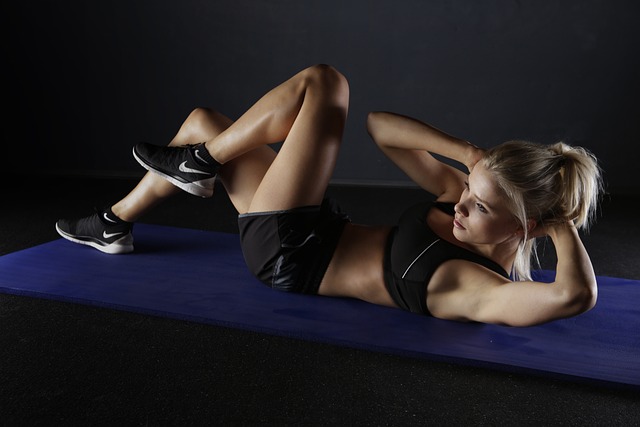The American Council on Exercise, in fact, commissioned a study to determine the best and worst ab exercises.
If you want the strongest, firmest abs, consider exercises that target all of the core muscles, including the rectus abdominis (or “six pack”), obliques, transverse abdominis, and lower back.
While there are numerous ab exercises to choose from, some are more effective than others.
5 Crunches and Other Ab Exercises That Actually Work
Please consider that if you want to modify the appearance of your midsection, you may need to adjust your eating habits as well. Eating a healthy, balanced diet can be part of a comprehensive program for developing a strong, lean core.
This workout incorporates all of the exercises that were found to be very effective in activating the most muscle fibers in your abdomen. For the finest abs, repeat this workout two to three times a week.
Bicycle Crunches
Begin with bicycle crunches. This is an excellent move for strengthening your obliques and deep abs.
- Place your hands behind your head and lie face up on the mat.
- Bring your knees into your chest and elevate your shoulder blades off the floor without straining your neck.
- As you extend the other leg, rotate to the left, bringing the right elbow nearer the left knee.
- Change sides, bringing the left elbow up to the right knee.
Continue pedaling on alternate sides for 1 to 3 sets of 12-16 repetitions.
Leg Raise for Captain’s Chair
This activity, also known as hanging leg lifts, works the hip flexors, abs, and obliques. If you don’t have a captain’s chair rack, try holding onto a pull-up bar or use ab straps. Alternately, you might perform lying hip raises.
- To stabilize your upper body, stand on the chair and clutch the handholds.
- Maintain a calm posture by pressing your back on the pad.
- Lift the knees to hip level by bending the knees and contracting the abs.
- Avoid arching your back or swinging your legs overhead.
Lower carefully back down and repeat for 1 to 3 sets of 12-16 reps.
The captain’s chair leg raise, which is commonly found in gyms, exercises both the rectus abdominis and the obliques.
Crunch with an Exercise Ball
An exercise ball is a wonderful tool for ab strengthening.
Because the legs are more involved while you’re on the floor, it’s far more effective than floor crunches. When you’re on the move, your abs work harder.
- Lie on the ball with it under your lower back.
- Cross your arms across your chest or behind your head.
- Lift your torso off the ball by contracting your abs and dragging the bottom of your ribcage down toward your hips.
- As you curl up, keep the ball stable (it should not roll).
- Lower back down, allowing the abs to stretch
Repeat this movement for 1 to 3 sets of 12-16 reps.
Keep both feet on the floor firmly as you curl up to keep the ball stable.

Leg Crunch Vertical
Another good technique for the rectus abdominis and obliques is the vertical leg crunch. It’s similar to a typical crunch, except your legs are straight up, requiring you to rely solely on your abs and increasing the intensity of the workout.
- Lie on the floor and raise your legs straight up, knees crossed.
- To get more support, put your hands behind your head, but don’t strain on the neck.
- Contract your abs to raise your shoulder blades off the floor as if reaching your chest for your feet.
- Maintain a fixed stance with your legs and visualize bringing your belly button towards your spine at the apex of the movement.
Lower and repeat for 1–3 sets of 12–16 repetitions.
Take care not to tuck your chin or pull on your neck as you lift your shoulder blades.
Torso Tracking
The Torso Track ranks fifth in terms of effective ab exercises.
It is critical to understand that this exercise might create lower-back pain, especially if you roll out too far.
- Grip the Torso Track handles firmly and pull the abs in without holding your breath like you are bracing them.
- And go forward as far as you can comfortably while breathing out.
- You’ve gone too far if you collapse in the middle and feel it on your back.
- To protect your back, reduce your range of motion as needed.
- Pull your body back by contracting your abs.
Increase the tension by employing extra tension cords.
If you can’t get a Torso Track, you can attempt the ab rollout on the ball instead. Consider a different activity if you are prone to lower back pain.
Your Arms Long Crunch
The long arm crunch, which differs from the typical floor crunch by straightening the arms behind you, is recognized as the sixth most effective ab workout.
This adds a longer lever to the maneuver, increasing the effort and challenge.
- Lie on a mat and extend your arms straight out behind your head, hands clasped, arms next to your ears.
- Lift the shoulder blades off the floor by contracting the abs.
- Avoid stressing the neck by keeping the arms straight. If you are experiencing neck pain, one hand should be behind your head while keeping the other arm outstretched.
Lower and repeat for 1–3 sets of 12–16 repetitions.
If you want to increase the difficulty, hold a light dumbbell.
This exercise also draws attention to the top region of the abs. However, keep in mind that your rectus abdominis is one long muscle that runs from your lower chest to your pelvis.
Try not to strain your neck by keeping your shoulders down.
Invert Crunch
The reverse crunch ranks seventh among effective ab exercises that target the rectus abdominis.
You’re curling the hips off the floor with this technique, so you’ll feel it in the lower abs.
- Lie down with your hands on the floor or behind your head.
- Bring your knees in towards your chest until they are 90 degrees bent, with your feet together or crossed.
- Contract the abs to lift the hips off the floor and raise the legs to the ceiling.
Lower and repeat for 1–3 sets of 12–16 repetitions.
Instead of swinging your legs and creating momentum, try using your abs to elevate your hips.
The key to doing this movement is to avoid swinging the legs to elevate the hips. You only need to elevate your hips a few inches off the floor for this little, inconspicuous action.
Crunch followed by a heel push
The crunch with a heel push appears like a conventional crunch, but you drive your heels into the floor, which works the rectus abdominis muscles more than regular crunches.
- Lie on your back, knees bent, and hands softly cradling your head.
- Keep your feet flexed while lifting your shoulders off the floor and contract your abs.
- Avoid pulling on the neck with your hands and instead gently support your head.
- At the apex of the crunch, press your heels into the floor while squeezing your back towards the mat and gently raising your glutes off the floor.
Lower and repeat for 1–3 sets of 12–16 repetitions.
The Ab Roller
The Ab Roller is the ninth-best exercise for targeting the rectus abdominis, and you’ve most likely seen it around the gym (or under your bed) for the last few years.
What’s wonderful about this is that it gives neck and arm support, which may be beneficial for folks who have neck discomfort when performing ordinary crunches.
- Sit on the Ab Roller with both hands on the bars.
- Contract the abs and rock forward, allowing the movement to come from the abs rather than from momentum.
Repeat this movement for 1 to 3 sets of 12-16 repetitions.
Slow down to minimize momentum. Instead of pushing with your arms, try focusing on your abs.
If you don’t have an Ab Roller, a variety of core exercises can provide a wonderful workout.
Elbows and toes plank
The plank exercise placed tenth in the ACE research and is an excellent technique to increase endurance in the abdomen, back and stabilizer muscles.

This motion is also useful for gaining strength for pushups, which require a lot of core strength.
- Lie face down on the mat, forearms on the floor, palms flat.
- Push off the floor, lifting up onto your toes and resting your elbows on the floor.
- Maintain your entire body straight with your back flat.
- To keep your back from sticking up in the air or sagging in the middle, tilt your pelvis and clench your abdominals.
Hold for 20 to 60 seconds, then descend and repeat 3-5 times.
Remember to maintain your elbows in line with your shoulders and your back flat.
To Conclude
You train the muscles in your abdomen, lower back, pelvis, and hips to work together when you practice core workouts or work your abs. This not only increases strength and muscle tone but also improves balance and stability. Even if you are not a gym buff, a strong core is necessary for excellent health and mobility.
Before modifying your exercise program, you should consult with a healthcare physician if you wish to undertake extra ab exercises. They can advise you on what is best for you, especially if you suffer from lower back pain. In addition, if you want to support and advice in developing a specific strategy to help you accomplish your goals, consider speaking with a qualified personal trainer.


